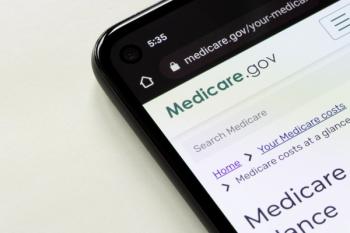
Connecting the Whole Person to Whole Care
As healthcare providers work to deliver the care their patients need, many struggle with how to treat the whole person-their medical, behavioral, and social needs-and the best way to efficiently track their outcomes.
As healthcare providers work to deliver the care their patients need, many struggle with how to treat the whole person—their medical, behavioral, and social needs—and the best way to efficiently track their outcomes.
The Great American Body-and-Soul Imbalance
The relationship between health spending and spending on social services in the United States is very different from that observed in other developed nations. According to the Brookings Institution, “We spend almost twice as much on healthcare per capita than any other developed nation, but this spending leads to an ever-accelerating clinical revolving door.” The difference, the Brookings report goes on to explain, is how much other Organization for Economic Co-operation and Development (OECD) nations spend on social services. “On average, OECD nations spend $1.70 on social services for every $1 on health services; whereas the US spends just 56 cents.”
Nations in the OECD spend 70% more on social care than healthcare, while the United States spends 56% less on social care than healthcare.1 That’s a staggering difference. At some point during the development of our societies, our systems went in different directions. But now, all indicators point to an urgent need to make a U-turn and learn from OECD nations. Health outcomes strongly suggest that it is no coincidence that the United States has this unusual combination of high spending and mediocre outcomes.
Ultimately, we have the wrong balance between social and medical spending.
- Research, at the state level, conclusively proves that a higher ratio of social to health spending leads to significantly better health outcomes in adult obesity, asthma, mental health indicators, mortality rates for lung cancer, high blood pressure, heart attack, and type 2 diabetes.2
- According to The Commonwealth Fund, “Food-insecure individuals are 20% more likely to report that they have hypertension, and 30% more likely to report they have hyperlipidemia, than their food-secure counterparts. Poor health is closely tied to inadequate housing, food insecurity, and unemployment or underemployment.”
- There is concrete evidence that high utilization is typically influenced by multiple social determinants.
To address the whole person, it is critical to address multiple non-clinical needs simultaneously.
Most healthcare professionals recognize that the lion’s share of a person’s health depends on social factors outside the clinical realm and, when unaddressed, lead to compromised health and expensive clinical revolving doors. Nevertheless, many providers still operate without effective solutions to:
- Address the “whole person” and their multiple interconnected needs.3
- Track patients across their total health journey.
- Report on patient care outcomes at scale.
Today, most healthcare systems do a decent job leveraging technologies to track the patient journey inside their clinical setting. Electronic medical records, electronic health records, and case management systems effectively refer and track patients across multiple medical services to deliver a complete clinical solution. However, once the patient is referred out of the clinical setting, and seeks assistance with social or behavioral needs, clinical institutions go blind and powerless.
Social Determinants of Health Are Part of the Puzzle
Over the past few years, there has been vocal realization that social determinants of health are indeed a critical part of the total health puzzle, not only from the perspective of the patient’s health betterment, but also from the economic implications of reducing avoidable utilization. Policy makers are pushing forward with programs to address this realization:
- CMS is aggressively promoting Its Accountable Health Communities Model to address a “critical gap between clinical care and community services in the current healthcare delivery system by testing whether systematically identifying and addressing the health-related social needs of Medicare and Medicaid beneficiaries though screening, referral, and community navigation services will impact healthcare costs and reduce health care utilization.”4
- New York State is making an $8 billion investment in the Delivery System Reform Incentive Payment (DSRIP) program to promote community-level collaborations with the intent of reducing avoidable hospital readmissions.
Nevertheless, most healthcare providers are hesitating on what concrete steps they should take to extend patient care coordination, improve total care, reduce avoidable utilization, and track patient care outcome visibility.
First Generation “Referral and Community Navigation” Technologies
Over the past 3 years, several new and reinvented healthcare tech providers have come to market to capitalize on this opportunity and provide the systems healthcare providers need. Most position themselves as healthcare technologies designed to address social determinants of health by linking clinical and social service providers into a health continuum.
But these solutions are fundamentally flawed. Instead of creating platforms that are designed to make the patient journey and data-access the focal point of their solution, they are merely digitizing “yellow pages” of service providers into curated e-directories and augmenting them with bi-directional referral tools aimed at escorting patients out of their clinical environment. While this approach is an improvement over land locking the patient inside the clinical realm, savvy healthcare professionals realize that this approach is inadequate and overly transactional, prioritizing the referral over the patient, the health journey, and care outcomes.
Sadly, health continuums miss out on the opportunity to take a 360-degree view of the whole person and effectively cater to their multiple needs: social, clinical and behavioral. Instead, they are narrowly concerned with the following:
- Was the referral made?
- Was the referral accepted and closed?
- Did the appointment occur?
Unfortunately, whether a referral is made or accepted or an appointment confirmed does not shed any light on the whole person’s needs nor does it provide visibility into their health journey, their broader social determinants of health, and patient care outcomes. Furthermore, this approach cannot track structured patient care outcome data, across multiple social service providers and patients, at scale.
Imagine a patient with multiple social and behavioral needs who has been referred to multiple service providers. Let’s assume one referral was for mental health, the second for opioid addiction, and the third for housing. Now, let’s assume we wanted to report on each service outcome, by provider. If we are operating from an electronic directory with a bi-directional referral tool—where the outcomes are captured mostly in free text—we would need to manually extrapolate data from each referral (was it closed?) and then make sense of the free text case notes to determine what outcome had occurred and whether it was resolved. Then, we would have to combine our notes from each service outcome. The sum-total of this laborious effort would yield an overall picture of the patient journey, assuming the case notes left no room for misinterpretation.
But what if you needed to report on hundreds or thousands of patients across one or multiple communities, quickly? Would this approach scale? The answer is absolutely not!
As hospital systems evolve into true value-based care organizations focused on treating the whole person— body, mind and soul—it is critical that their platforms be designed to track structured outcomes, in real-time and readily generate care outcome reports by all social services types, regardless of how many patients, providers or communities are served.
Next Generation Approach and Technologies
So, how do healthcare providers graduate to next generation systems? They must judiciously seek solutions that:
- Address the whole person, rather than transact referrals.
- Make the patient—not the referral—the focal point of the solution.
- Handle multiple social determinants simultaneously.
- Track and provide visibility into the complete patient journey.
- Track patient care structured outcomes at scale, and in real-time.
The ability to deliver on the above requires a new approach and technology that centers on the patient and the fulfillment of their “total health” journey.
So how do you get there? As a healthcare professional, how do you lead your institution to effectively address the social determinants of health and meaningfully impact patient outcomes while yielding measurable outcomes and tangible economic benefits?
By taking on a new mindset, and making deliberate decisions like:
- Focus on the patients and their co-occurring needs
- Seek consistency in your quality standards
- Plan for business impact—return on investment (ROI) and return on expectation (ROE)
- Standardize your data and report at scale
- Focus on the whole person, not the referral
Now, let’s take each one of these decisions separately, and see what you can do specifically to make them happen.
1. Focus on the patient and their co-occurring needs
One of the biggest challenges patients face when seeking social or behavioral services is the “siloed” nature of these services. While each provider may be good at what they do, most are not connected to a broad network of other social and behavioral service providers.
Consequently, they face an uphill battle when trying treat the whole person, especially when the patient’s co-occurring needs transcend multiple determinants.
What can you do: Invite service providers to join a collaborative network focused on the whole person and servicing their co-occurring needs collaboratively.
2. Seek consistency in your quality standards
As a healthcare professional, to best meet your patient’s multiple clinical needs, would you: (a) give your case worker access to a long e-directory of random clinical service providers, and say “pick one”; or (b) engage them with a known network of interconnected service providers, trained to collaboratively chaperone the patient across multiple clinical services?
I have yet to meet a healthcare professional who would chose option (a). Yet, when it comes to addressing a patient’s social and behavioral needs, many choose (b) because it’s easier.
Effectively addressing the social determinants of the whole person requires shedding this double standard, and infusing equal standards of quality across all patient care coordination initiatives, regardless of whether they are clinical, social or behavioral.
What you can do: Apply equal levels of quality standards and coordination to all determinants of health, social and clinical.
3. Plan for business impact—ROI/ROE
For every healthcare professional who understands the importance of addressing the social determinants of health, there is an executive in the C-suite who may not, and needs to understand the ROI or ROE associated with the change. When ROI cannot be calculated, using specific metrics to explain ROE may work well.
For example, nearly 1 in 5 Medicare patients discharged from a hospital is readmitted within 30 days.5,6 So, although you may not be able to make a direct financial ROI claim, you could safely make the argument that any activity that is aimed at curbing avoidable readmissions is worth consideration. Metrics that address improved patient care, heightened customer satisfaction, desired behavior change, organizational capacity efficiencies, accelerated speed of processing, and error reduction, may also be used.
What you can do: If you cannot develop a direct ROI, demonstrate how your SDoH initiative can impact ROE metrics that are already tracked and part of your executive team’s performance management measures.
4. Standardize your data and report at scale
Whether you are driven by outcome-based funding, want to demonstrate procedural efficiencies or report in detail about the patient health journey, plan to track and report data at scale. This will require your network of social, clinical and behavioral services providers to align their operations on a set of standardized structured outcomes, and agree on homogenous terminologies across the communities they serve.
From a technology perspective, it is critical to select a platform designed with the right data model to support out-of-the-box tracking at scale and real-time reporting. Make sure the platform you choose has the ability to:
- Centralize patient data
- Track patient care outcomes across multiple providers
- Generate out-of-the box reports on the patient journey across the network
- Configure reports based on structured outcomes
- Collaborate across multiple service providers
- Initiate and track multiple referrals
- Report on patient health improvement
- Report on network efficient/inefficiency levels
- Support distributed model where each organization can add to the journey
- Measure success (or lack thereof) at patient and community level at scale
What you can do: Conduct the necessary technology due diligence to assure your technology goes beyond transacting referrals and deep into tracking and reporting the patient journey— at scale!
5. Focus on the whole person — not the referral
In an article in the British Journal of General Practice, Joshua Freeman, MD, wrote, “We are not doctors for particular diseases or particular organs or particular stages in the life cycle—
we are doctors for people.”7
Most of the current healthcare literature suggests that finally, American healthcare executives have come to the realization that treating the whole person requires addressing the person’s social, behavioral and clinical needs simultaneously. Nevertheless, this epiphany is no panacea for the rigorous diligence required when selecting the best approach and technology to assure measurement and accountability in patient care management.
Today, as you implement technologies to connect your patients to community-based social and behavioral service providers, it is critical that you refrain from making the referral tool and e-directory of service providers your priority.
What you can do: To address the whole person and chaperon them across all their social, clinical and behavioral needs, implement solutions that focus on the patient, their journey and the quality of care outcomes.
Finding the Connection Between Mind and Body
As you strive to connect the whole person to whole and complete care using today’s technology, be sure to look beyond the referral tools and e-directories to technology that is integrated, coordinated and addresses the entire spectrum of provider and patient needs.
References:
1. Stuart BM, Matthew DB, Cabello, M. Rebalancing medical and social spending to promote heath: Increasing state flexibility to improve health though housing. Brookings Institution. Website:
2. Bradley E, Canavan M, Rogan E, et al. Variation in health outcomes: the role of spending on social services, public health, and health care, 2000-09. Health Affairs (Millwood). 2016;35(5):760-768.
3. Boutwell A. Designing and delivering whole-person transitional care: the hospital guide to reducing Medicaid readmissions. Agency for Healthcare Research and Quality U.S. Department of Health and Human Services. Website:
4. CMS. Accountable Health Communities Model.
5. Jencks SF, Williams MV, Coleman EA. Rehospitalizations among patients in the Medicare fee-for-service program. N Engl J Med. 2009;360:1418.
6. Medicare & Medicaid Statistical Supplement. Baltimore: Centers for Medicare & Medicaid Services, 2007. Website:
7. Freeman J. Toward a definition of holism. British Journal of General Practice. 2005;55(511):154-155.
Newsletter
Stay ahead of policy, cost, and value—subscribe to AJMC for expert insights at the intersection of clinical care and health economics.

















































